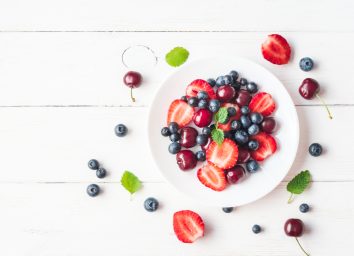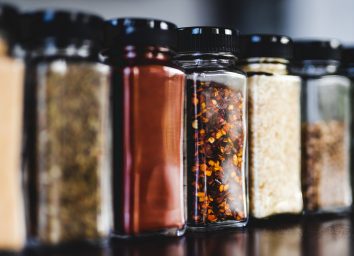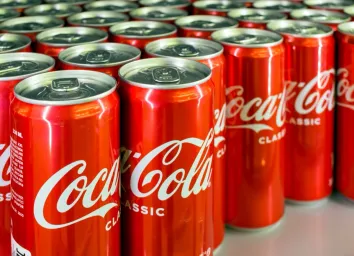The #1 Best Juice for Inflammation, Says Science
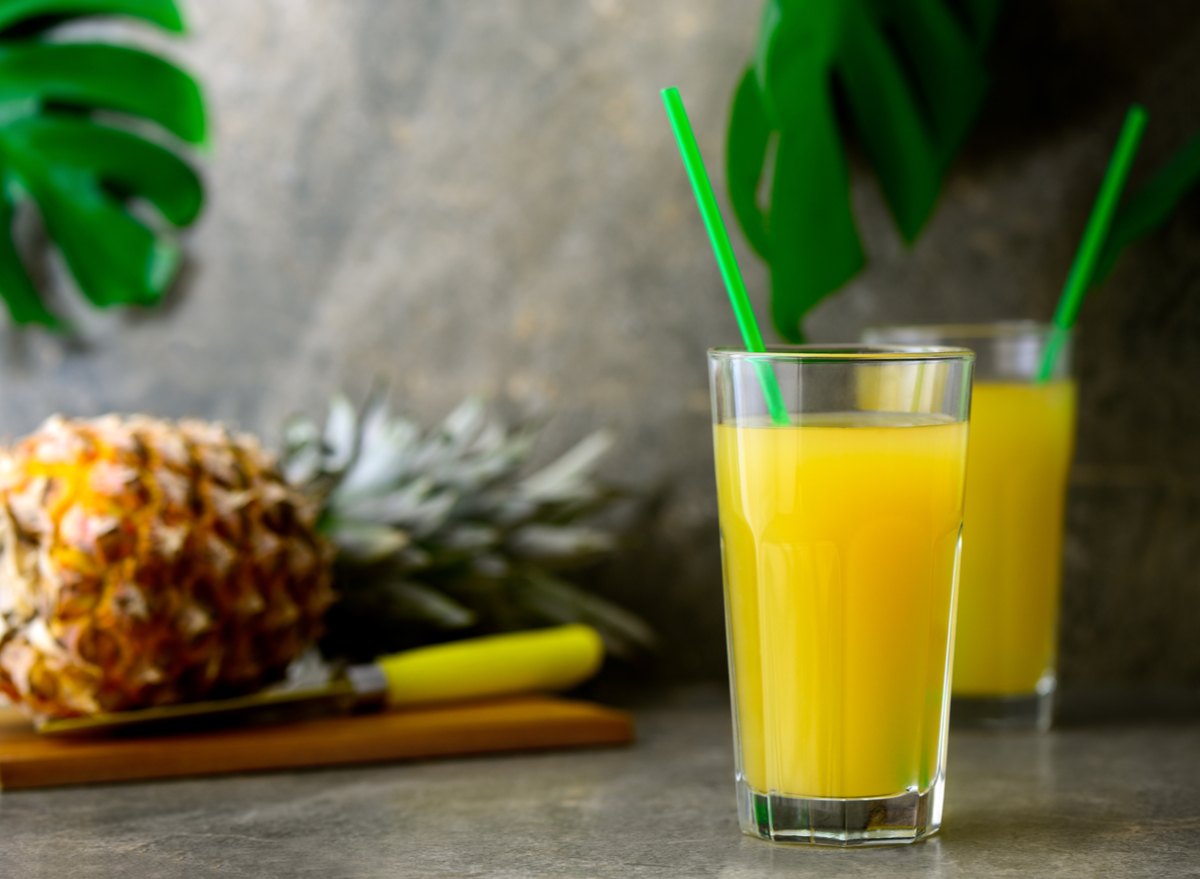
Inflammation, which happens when you twist your ankle or your temperature rises to a fever pitch to kill a virus, is your immune system’s acute response to the typical slings and arrows of life. It’s a good thing because it is short-lived, going away after your body finishes its repair work.
Chronic, low-grade inflammation, however, sticks around like an unwelcome houseguest. Over time, it can become more than annoying; long-term excess inflammation can develop into type-2 diabetes, cardiovascular disease, cancer, and other deadly conditions.
The foods you eat regularly can contribute to chronic, low-grade inflammation. You likely recognize some of those inflammation triggers—fried foods, refined carbohydrates like white bread and baked goods, sugary beverages, preserved meats like hot dogs, red meat, margarine, and lard. Limiting those flame throwers is a good policy.
Cooling chronic inflammation by eating foods with anti-inflammatory properties is smart, too. One way to pack those anti-inflammatory nutrients into a convenient and delicious health booster is by turning them into juice.
Here are some of the anti-inflammatory compounds found in ingredients you can add to juice, as well as a juice recipe you can whip up to reduce inflammation. Then, for even more healthy tips, here are the Eating Habits to Lose Abdominal Fat As You Age, Say Dietitians.
Bromelain (found in pineapple juice)
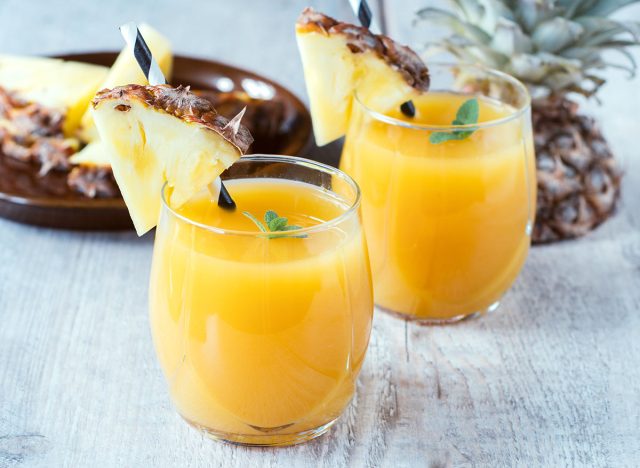
Bromelain, a mixture of enzymes found in pineapple juice, has long been used as a topical treatment for the pain and swelling of sports injuries like tendinitis, sprains, and muscle pulls and to reduce bruising after surgery. Studies show that bromelain is readily absorbed by the body when you drink pineapple juice and can relieve osteoarthritis pain, diarrhea, and cardiovascular disorders. It also is believed to possess anticancer properties.
Carnosol (found in parsley)
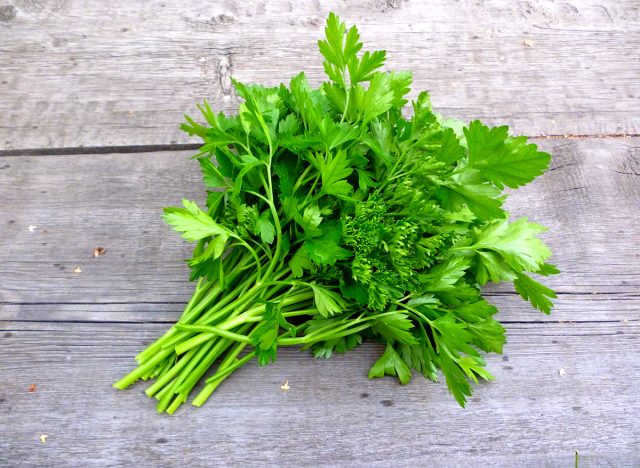
Parsley is rich in the antioxidant vitamins C, A, and E, which have been found to be helpful in reducing inflammation of the joints due to arthritis. Another agent found in these greens, called carnosol, may hold promise for targeting proteins and hormone receptors associated with inflammation and resulting cancers of the prostate, breast, skin, blood, and colon, according to a review of research.
Curcumin (active ingredient in turmeric)
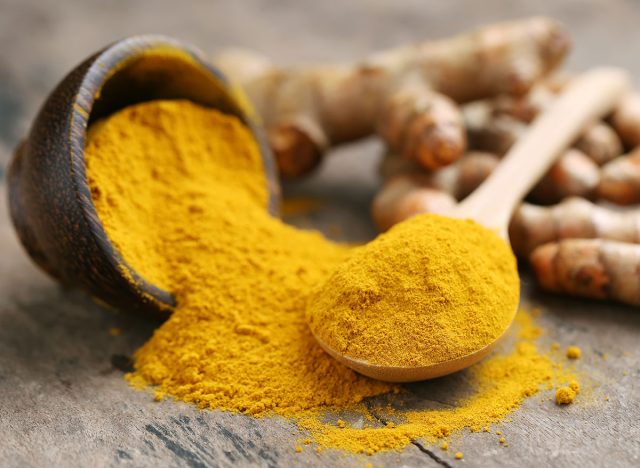
The orange-yellow spice turmeric has been used as a medicinal herb for thousands of years. Recently studies have suggested that the powerful antioxidant curcumin found in turmeric may offer preventive and treatment benefits for many chronic diseases. A 2015 review of studies in the journal Molecules suggests curcumin can reduce the oxidative stress that triggers the low-grade inflammation that causes metabolic, neurological, cardiovascular, and inflammatory bowel diseases. Learn more about This #1 Best Spice to Reduce Inflammation.
Folate and vitamin C (in lemon and lime juice)
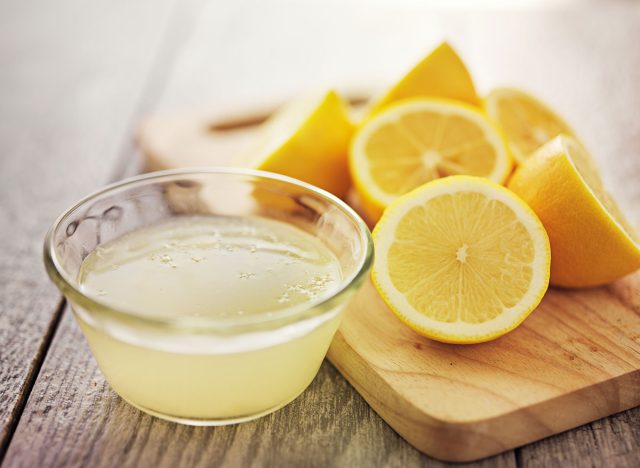
Citrus fruit juices like lemon and lime juice are terrific sources of vitamin C and folate, which support many types of immune cells such as natural killer cells, T-cells, and B-cells. Lemon and lime juice are also antibacterial, antiviral, antifungal, analgesic, and anti-inflammatory, research shows.
Gingerol (active component in ginger root)
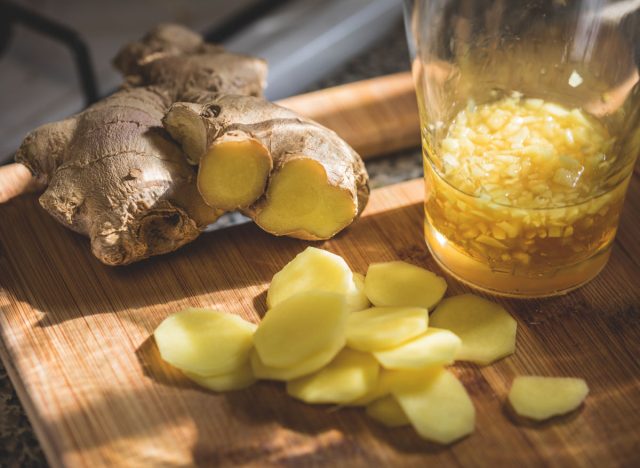
This knobby root, a staple ingredient in Asian cooking, adds a pleasant spicy sweetness to hot teas and cold juices. An age-old remedy for nausea, bloating, gas, and fatigue, ginger may also prove helpful as a natural way to lower blood sugar and combat insulin resistance. The International Journal of Preventive Medicine reports that ginger’s natural anti-inflammatory compounds are also effective at reducing leg muscle pain after intense bouts of cycling exercise.
Quercetin (in red apples, berries and cherries)
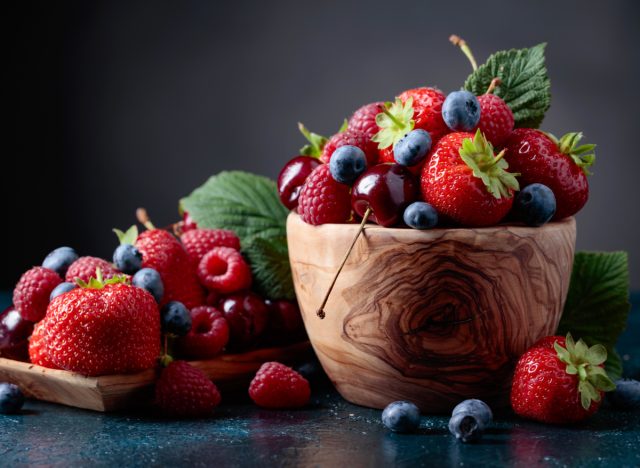
You’ll find quercetin in many colorful fruits and vegetables. Red wine, black and green tea also contain a good amount of the flavonoid. The journal Nutrients reports that the potential benefits of consuming antioxidant-rich fruits and vegetables with high amounts of quercetin like red apples, berries, cherries, kale, and broccoli include resistance to inflammation, viruses, and cancer.
Make a Pineapple-Ginger-Turmeric Juice
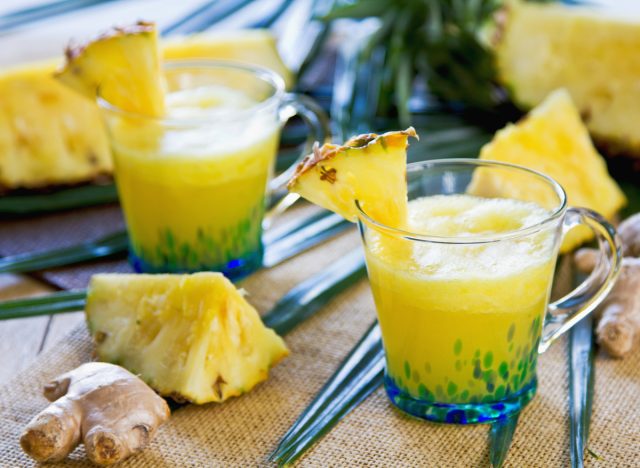
You can experiment with any combination of the ingredients above to create your own anti-inflammation juice. Or try this recipe made with a high-powered blender.
Ingredients
- 3 cups fresh pineapple, peeled
- 2 inches fresh ginger root, peeled
- 3 pieces of turmeric or the equivalent in turmeric powder
- 1 lime or lemon, peeled
- 1 cup brewed green tea, cooled
- Parsley garnish
Instructions
- Chop fruit and roots into small pieces.
- Add all ingredients to a high-powered blender and blend until smooth.
- Strain into a glass of crushed ice and garnish with lice slice and parsley sprig.
For more delicious recipes, check out these 40+ Best-Ever Breakfast Smoothies for Weight Loss.

